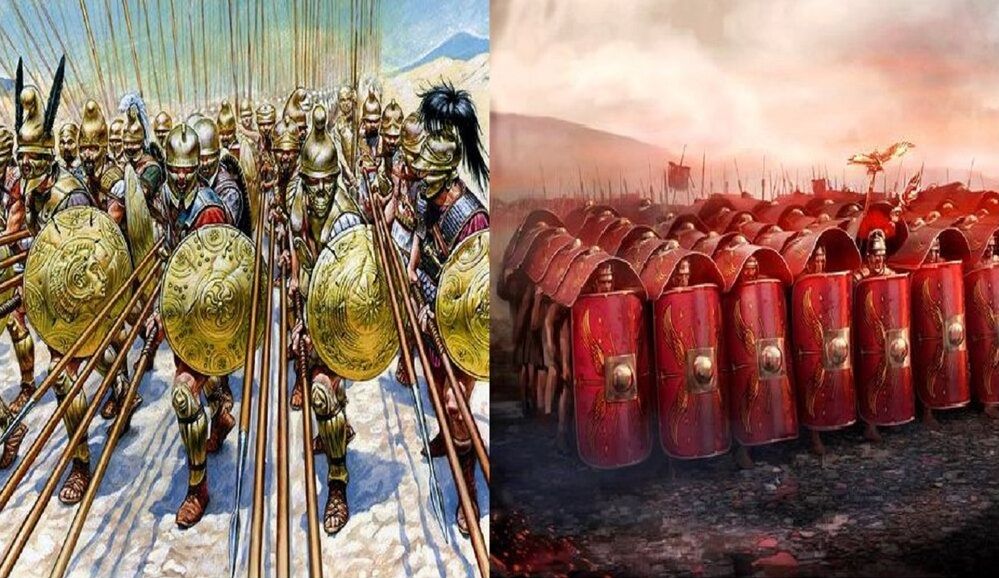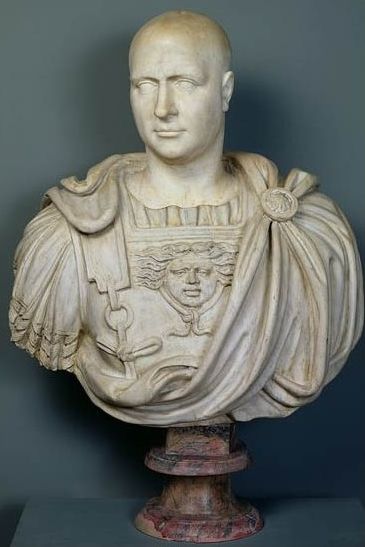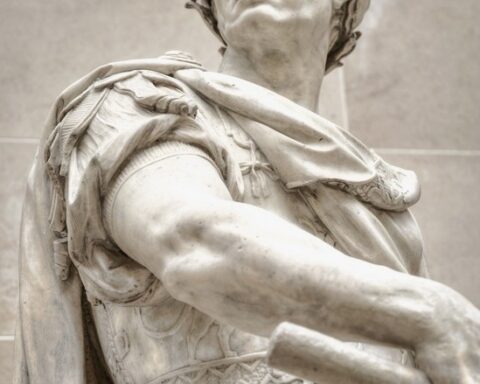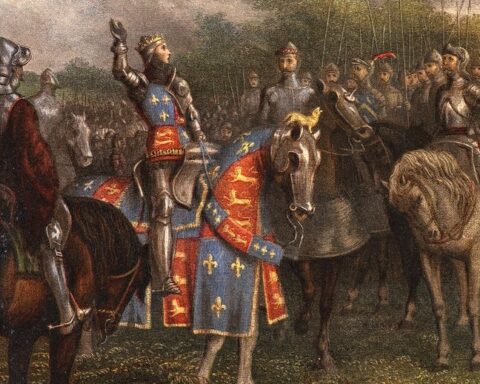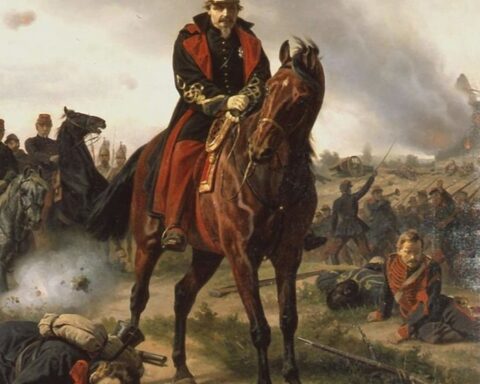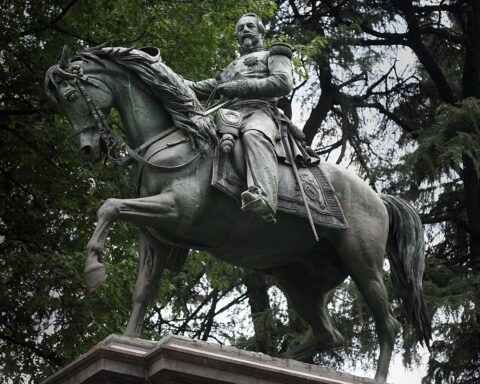Editor’s note: The following is extracted from Warfare By Land and Sea: Our Debt to Greece and Rome, by Eugene S. McCartney (published 1923).
Before noting further contributions of the Greeks and Romans, we shall stop to call attention to their tactical units, the phalanx and the legion. The phalanx consisted of rows of hoplites, heavy-armed men, equipped for the offense with spear and sword and protected by shield, helmet, corselet and greaves. The hoplite was a spearman or pikeman whose heavy equipment restricted his effectiveness to level ground. As four-fifths of Greece is mountainous, its seems paradoxical that the hoplite was the mainstay of the Greek armies. The heavy arms and armor were designed to protect the open fields and arable valley lands, since possession of them gave an enemy control of the food-supply and consequent power to dictate peace. It will be recalled that winter campaigns were very infrequent.
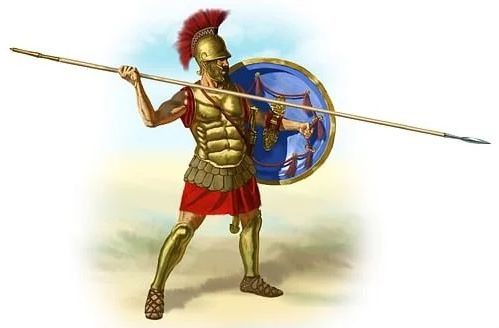
Power was acquired by depth of ranks as well as by heavy weapons. The average depth of the phalanx was eight men, although it occasionally reached sixteen, even before the time of the Macedonians. As early as 424 B.C. at Delium the Theban phalanx had a depth of 25, which at Leuctra in 371 B.C. Epaminondas made his left wing about 50 ranks deep.
One ancient writer[1], who consulted several sources of information, estimates the number of men in the phalanx at 16,384. With a depth of 16 men, this would make 1,024 files. Allowing the usual space of six feet to a man, i.e., intervals of three feet, we see that the line would stretch out over half a mile in length. In close order of battle, this space might of course be reduced, as Polybius says. We hear of phalanxes of from 10,000 to 20,000 men. Naturally the phalanx was divided and sub-divided, as is the case with our own military division.
“Many considerations may easily convince us,” says Polybius, “that, if only the phalanx has its proper formation and strength, nothing can resist it face to face or withstand its charge.”
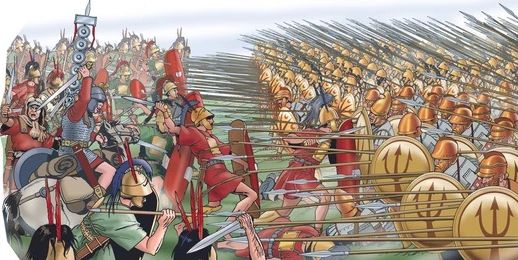
The spear, or sarissa, as the Macedonians called it, might be 21 feet long, or even 24 in Hellenistic times. Five or six rows of spearpoints would project beyond the front rank, making an impenetrable barrier. The spears of the rear ranks rested upon the shoulders of men in front with their points directed upward. The formation looked like a huge porcupine with the quills pointing in one direction. The Roman consul, Lucius Aemilius, a seasoned veteran, confessed to friends at Rome that he had never seen anything more terrible and alarming than the Macedonian phalanx of Perseus.
We need not, however, suppose that the phalanx of Alexander was equipped with a spear of such length. The 24-foot sarissa mentioned by Polybius is possibly due to lack of imagination and tactical ability on the part of the generals, with perhaps some deterioration in the quality of the troops.
The Roman legion derives its name from the legio, the ‘gathering’ of the clans. Their fighting at first must have lacked orderly formation and intelligent direction. According to one account, the early Romans were utterly astounded when they found their opponents, the Tyrrheni (Etruscans) organizing the attack and forming compact ranks. They showed their military bent by going and doing likewise.
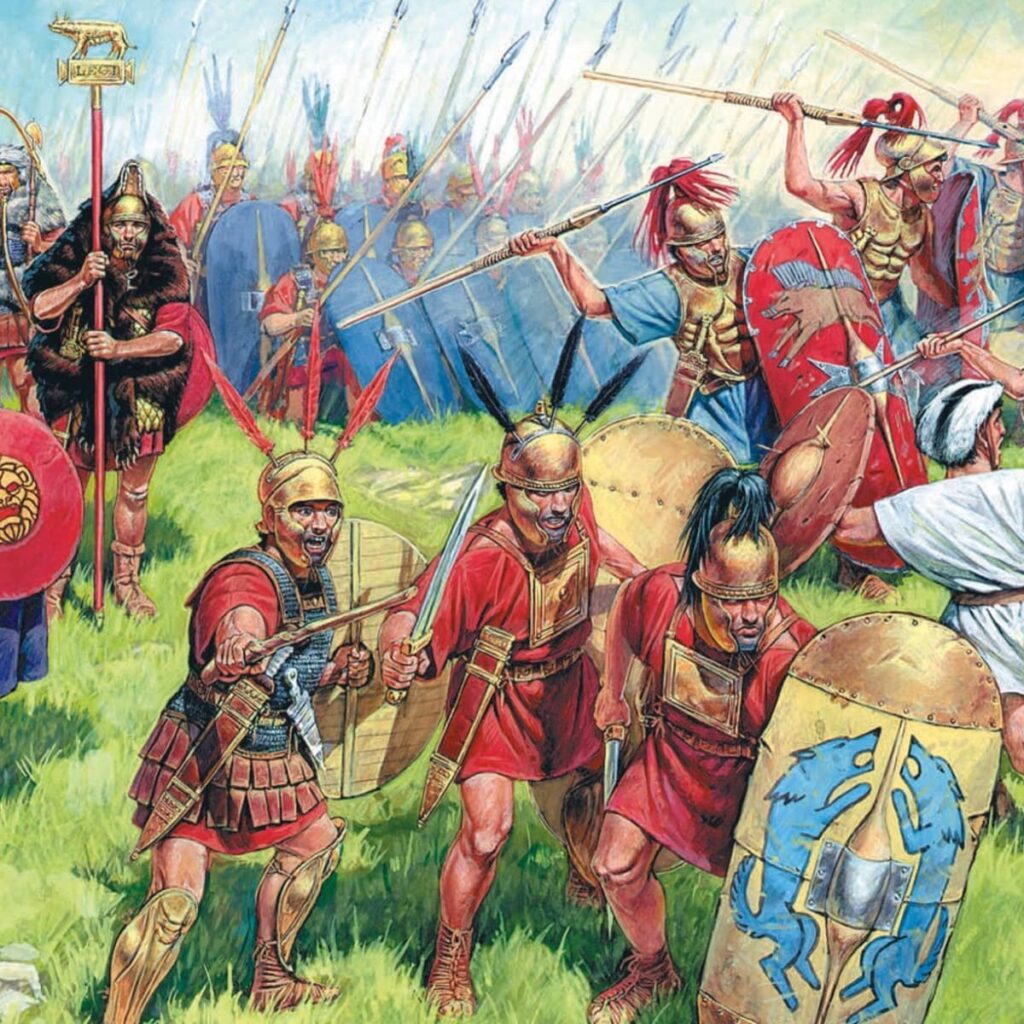
The legion is a descendant of the Doric phalanx, which found its way into Latium by way of Magna Graecia. The Romans adopted and adapted it, making it far more mobile and flexible. Change in the phalanx was inevitable. Without cavalry as an efficient complementary arm, the formation of the legion had to be opened so that it alone might take the initiative; otherwise the phalanx formation was doomed to stagnation, as in Hellenistic Macedon. The history of these changes is lost, but it has been suggested that innovations were made by Camillus in order to meet the initial impact of the Gauls, who used long swords, by allowing fresh troops to advance between the contestants in the front line. Mountain wars against the Samnites may have caused other changes. By the time of the wars with Pyrrhus, the manipular legion, which is built around small bodies of men, was highly developed.
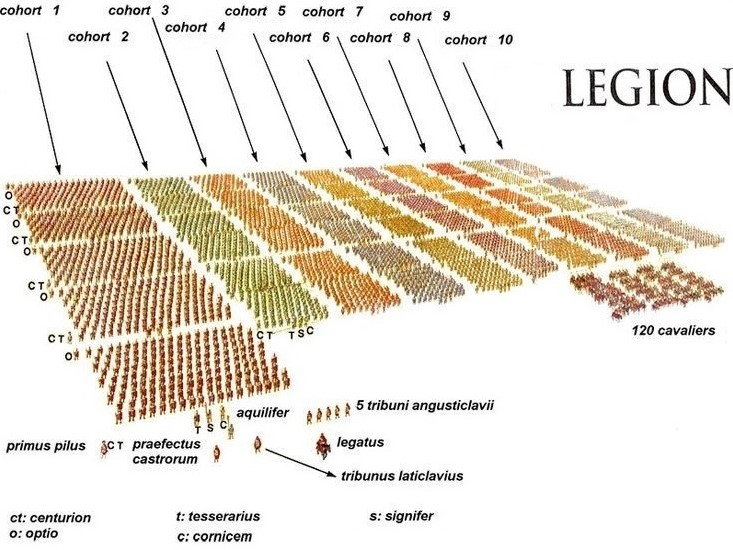
Theoretically, the legion was supposed to have 6,000 men. The century, the smallest division, consisted of 100 men commanded by a centurion. Two centuries made a company or maniple. Three maniples constituted a cohort and ten cohorts a legion. Polybius tells us that the legion of his day numbered 4,200 men, in times of emergency, 5,000.
The legion had three ranks, the second of which was designed to relieve or replace those in the front rank. The triarii, or men in the third rank, acted as reserves to those in front of them, although they are not reserves in our sense of the word.
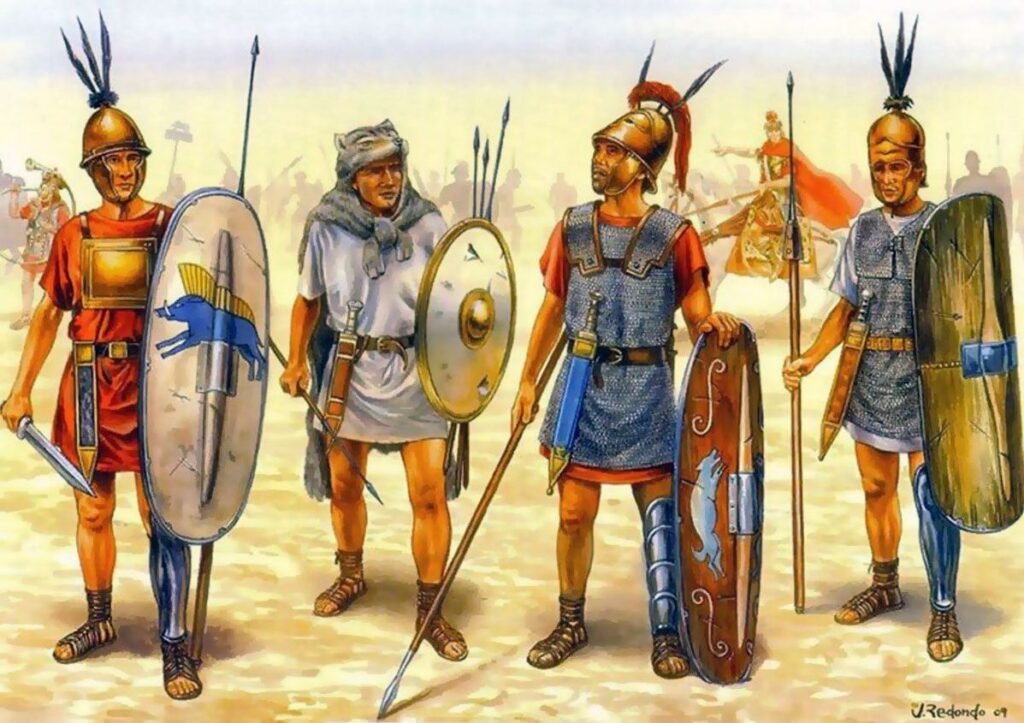
The legionary was armed in much the same fashion as the hoplite. He was, however, a swordsman, and not a spearman. The spear, as a weapon for close fighting, had been replaced by a short, pointed, broad sword with two edges, which he was wont to use for thrusting and not for slashing. As a rule, the spear was hurled before the lines clashed.
Through adaption and remodeling, the Italianization of the phalanx was so complete that its foreign extraction passed unnoticed. The best type of legion never met the best type of phalanx, nor were conditions and generalship equal when phalanx and legion did meet. At Heraclea in 280 B.C., they battled for the first time. Here, after seven indecisive clashes, it was Pyrrhus’s “Lucanian oxen” (elephants), aided by Thessalian horse, that beat the Romans. At Cynocephalae in 197 B.C., the phalanx under Philip V, after gaining an initial success over the legion under Flaminius, lost the day because of its inability to maneuver over broken ground.
It is really unfair to compare the best phalanx and the best legion. They were intended for different purposes. The Romans depended entirely upon the legionaries for victory; in set battles, the phalanx of Philip and Alexander was expected to hold or to engage the opposing infantry while cavalry maneuvers were being executed. Cavalry was the striking arm. The phalanx of Alexander does not seem to have been at the mercy of uneven ground. It was flexible too. At Arbela it surprised the Persians by opening up to let scythe-bearing chariots through.
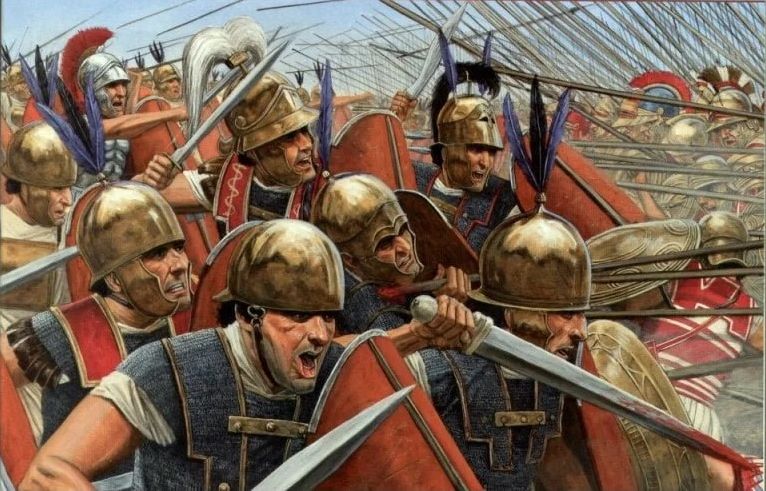
The legion was, however, more flexible than the phalanx. Once the spears had been put in position, the phalanx could not be readily divided. The legion could act as a unit or in parts, and maniples and cohorts could be readily detached from it, even during an engagement.
Unlike the phalanx, the legion could defend itself from an attack in the rear. At Cynocephalae, one wing of the phalanx carried all before it until it was assailed from behind. Then it was easily defeated, since “the nature of the phalanx is such that men cannot face round singly and defend themselves.” In the battle with the Helvetii in 58 B.C., an attack was made upon the Romans from the rear. The third line simply faced about and met the new peril.
Some flattering tributes were paid by Rome’s enemies to the organization and equipment of the Roman legion. Mommsen thus sums up the changes that were visible in the phalanx of the victor of Heraclea, when he faced the Romans at Ausculum (279 B.C.): “Pyhrrus, perceiving with the sharp eye of a soldier the advantages of the Roman manipular organization, had on the wings substituted for the long front of his phalanxes an arrangement by companies with intervals between them in imitation of the cohorts.” The equipment of the legion was equally good. Hannibal fitted out many of his soldiers with weapons taken from slain legionaries.
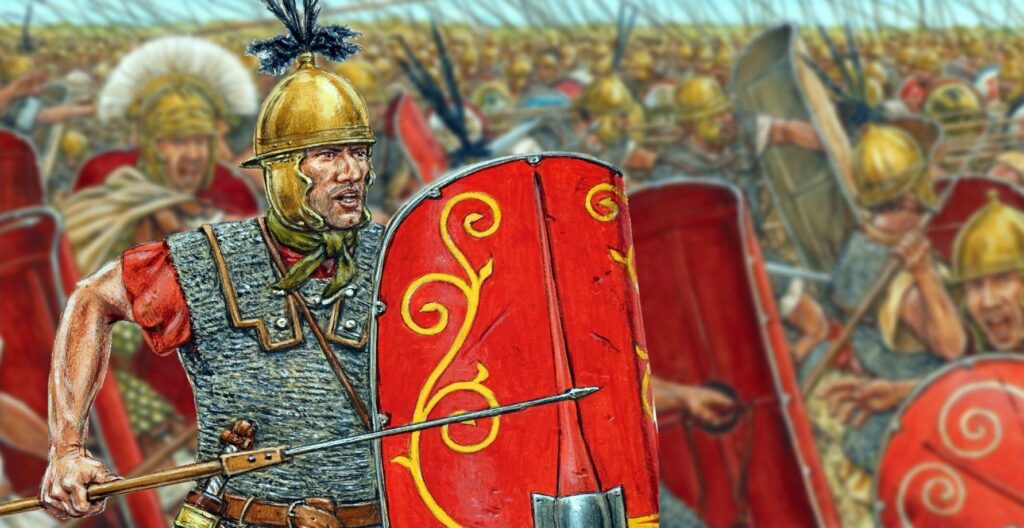
The clash of the legion aided by horse against Alexander’s formation would have been a sight for Mars. With pardonable patriotism, Livy thought the Romans would have been able to defeat Alexander if he had invaded Italy. Polybius, who saw and judged with the discernment of a soldier, had no doubt of the superiority of the legion over the phalanx.
The legion and, to a smaller extent, the phalanx also, with their divisions and subdivisions, capable of maneuvering in harmony or in detachments, have proved models of efficiency. Whatever the names these smaller units take today, and whatever their numbers may be, no modern army would dare to disregard the lessons of minute organization first taught so supremely well by Greeks and Romans.

______________________________
[1] Aelianus, De Instruendis Aciebus, 8.

